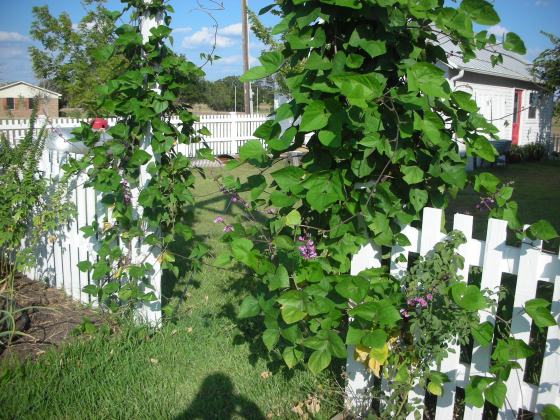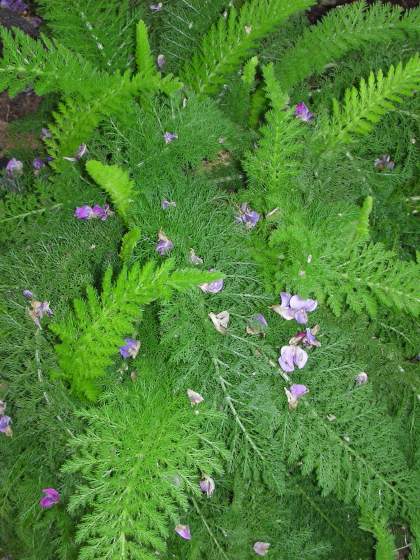Asparagus is an extremely long lived perennial. A friend of a friend has a bed that has been producing for 36 years! Now that is an extremely long time but it is not uncommon to find beds that have been in production for over 20 years. Asparagus is tough, reliable, attractive and a joy to eat. So, if I am going to grow it, I am going to have to make a long term commitment to it.
I have never grown asparagus before. But since my wife and I love it so, we have decided now is the time to get started. Like most of you, if I don’t know how to grow something I do research. I have been reading about how to grow asparagus for over year. However, all of the research in the world is no substitute for having an actual expert to talk with. I am lucky enough to be very close friends with an outstanding asparagus expert and grower.
(WARNING! The next three paragraphs contain EXTREME nostalgia. If you are not interested in tales of high school romance and rebellion, feel free to skip to the growing section )
Bobby Mitchell and I have been friends for more years than either of us thought we would live. We became friends in Junior High and have stayed in touch ever since. In high school, I had a 1955 Chevy Pick Up. Every time Bobby got in that truck, something broke. When we were 15, Bobby convinced the head varsity cheerleader (she was a senior and he was a sophomore) to go “parking” with him. The problem was, he had neither car nor license. Somehow he talked me into driving them out in the country and then sitting on the tail gate while he and the cheerleader “made out” in the cab. For some reason, this sounded like really big fun so I agreed.
The quarterback and the cheerleader did a great job of steaming up the windows of my 55. I enjoyed my first “dip” of Copenhagen snuff (which turned out to be a really bad thing in hindsight) while they enjoyed each other. Since my dad worked the 3 to 11 shift I knew that if we got home before 11:30 no one would be the wiser. So at about 11:00 I broke them up. Once we defogged the windows we headed home. Everything was going great. We had won the football game, Bobby had “scored” and I picked up a really bad habit. The night could not have been better.
When you are 15 you don’t yet have the maturity to understand that when things are going this good, something has to go wrong. After dropping the cheerleader off we headed home. It was about 11:15 and we were only five minutes from home when the drive shaft literally fell out of the bottom of my truck! Needless to say the rest of the night was almost as memorable as the first part of the evening had been. My dad was not the least bit impressed with our performance that evening. In fact, he was so unimpressed that I didn’t get to drive my truck for a month. However, it was worth it. This was the first of many, many memorable experiences that Bobby and I shared in that old pick up.
Growing Asparagus – I visited Bobby last summer and was very impressed with his 70’ row of asparagus. When I told him I wanted to grow my own he was happy to share his experience with me.
Bobby recommends planting year old crowns. Since it takes three years to get asparagus from seed, these older roots allow you to enjoy asparagus in year two. To plant them, dig an 8″ to 12″ round hole (or trench) that is about 8” to 10” deep in full sun. Place your plants about a foot apart. Put two or three inches of high grade compost in the bottom of the hole. The compost should be slightly mounded in the center. Spread the roots of the crown out over the mound like an octopus. Once the roots are in place, cover lightly with compost and gently water in. Research has shown that if you plant asparagus too deep, your yields will be reduced so try and keep the crowns no more than 6″ below the soil level.
Keep the roots damp and in a few days the first little shoot will appear. As that sprout grows, slowly add soil and compost to the hole. Be careful not to completely cover it up. In the first year you can expect each crown to produce 2 to 5 sprouts. These early sprouts are small and delicate. Bobby recommends letting 3 sprouts grow above soil level before completely filling in around them. You may also want to stake these young shoots to make sure the wind doesn’t break them off. Once these three sprouts are a few inches above the soil line you can finish back filling the hole with a soil/compost mixture. Asparagus is a heavy feeder so do not scrimp on the compost. Tamp the soil in firmly to support your young sprouts.
The first year the stalks will be pretty puny looking. Continuously weed your beds and apply about an inch of water per week. By the second year you will get a 3′ to 4′ tall plant with very attractive fern like foliage. Asparagus foliage is so thick that it shades out most of the weeds in the second year. In the first year, you can expect your roots to produce two to five shoots. In the second year that number will double. This is when you can begin to do a light harvest. By year three you can expect to have 25 to 30 sprouts per root system. After year two let the first couple of sprouts of the season grow up and grow foliage. You can start picking shoots after that. Once the mature plants start producing, the spears come pretty quickly. If you wait too long to cut don’t worry. Just let the stalk produce foliage. There will still be plenty of stalks to pick
Asparagus start producing in early spring and can be harvested for four to six weeks. Do not over harvest. Make sure and leave enough canes to make a large, healthy plant. The foliage will feed the roots, which will in turn, store the food to put into shoot development next year. Once you stop harvesting, “mulch” or top dress your plants with three to six inches of compost. Top dress again in the fall. The foliage will last until first frost. You can prune throughout the year to control height. Once a frost hits them, cut the foliage off at the ground and apply more compost.
A mature asparagus plant produces about ½ pound of asparagus per year. If you like it as much as we do, four to five plants per person should be adequate. There are several varieties of asparagus that do very well for us here. I am planting some New Jersey sterile (all male hybrids) and Mary Washington (a popular heirloom variety). The Jersey hybrids produce large, flavorful spears and will not spread. Mary Washington produces yellow flowers and red berries. The spears are very tasty. However, it spreads so you will have to do more “weeding” with this variety than you will with the all male hybrids.


















































